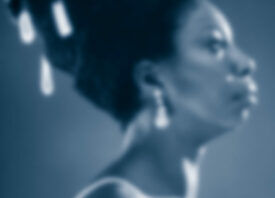Search this site
Shirley Chisholm, Marie Curie, & Katharine Graham: Photos of Women Who Shaped History



Turn the pages of The Only Woman, the new book by the filmmaker Immy Humes, and you’ll find pictures of women, surrounded by men: scientists, artists, shipyard workers, activists, athletes, lawyers, and more. A few of them are smiling, and several of them are looking directly at the camera. Gloria Richardson, the Civil Rights activist, is different: she’s mid-stride, pushing aside a National Guardsman’s bayonet and rifle. It’s 1963 in Maryland, and Richardson isn’t afraid.
The Only Woman, now available for pre-order from Phaidon, spans 158 years of history, beginning in Virginia during the American Civil War and culminating on the football field at Vanderbilt University in Tennessee. As Humes explains, the photographs were made across twenty countries, including Mexico, Peru, England, Egypt, Pakistan, Japan, Singapore, Iceland, France, Turkey, New Zealand, and far beyond.
While many are formal group portraits and some fall under the photojournalism category, they all follow the same pattern: one woman, many men. Humes gave herself a rule: she’d only include photographs that adhere to the pattern, so no cropping was allowed. It started with a picture of Shirley Clarke (a fellow filmmaker), made in 1962, and from there, she found hundreds more.
In some cases–but certainly not all–the “Onlys” are also “Firsts”–meaning they were the first woman to win a Nobel Prize (Marie Curie), become a member of an American Presidential cabinet (Frances Perkins), seek the Democratic Nomination for President of the United States (Shirley Chisholm), become a deep sea diver for the army (Andrea Motley Crabtree), sit on the Associated Press’s board of directors (Katharine Graham), or win the Palme d’Or at the Cannes Film Festival (Jame Campion). Some of them remained the first and only for many years.
Humes has included familiar names–Chisholm, Curie, Frida Kahlo, Emmeline Pankhurst, Dorothy Parker, Colette, and Margaret Thatcher among them–and she’s also included women whose stories remain largely untold: an unidentified woman at the US Naval Academy in the days before women were admitted, a worker at a Pennsylvania railroad yard, a nurse in 19th-century Boston, and more. Some, including the boxing promoter Florence North and stick-up artist Virginia Wright, were previously unidentified but rediscovered in the process of creating the book.
Humes compares her early fascination with the “only women” photographs to a game of Where’s Waldo? (she amends it to Where’s Wanda?), and it’s easy to see why. Some contain groups so large it takes a moment to find her, while in others, she might be in the background. Sometimes she’s front and center, as is the case with jazz pianist and composer Lil Hardin. And then there are the pictures where you see her immediately, not because she’s in front but because she’s fighting her way through a crowd. Kathrine Switzer, who narrowly escaped the grasp of an angry race official to finish running the Boston Marathon, is one of them.
Gloria Richardson, casting aside that bayonet in 1963, is also impossible to miss. Maybe it’s her outstretched hand, or perhaps it’s the expression on her face–unsmiling and undeterred. Richardson passed away last year at the age of 99, having had the chance to witness the rise of the Black Lives Matter movement. She saw parallels between the work of today’s Civil Rights leaders and the work she did as part of the Cambridge Movement in the 1960s.
There’s a famous anecdote, retold by Humes in The Only Woman, about the Civil Rights leader’s meeting in the White House with Robert F. Kennedy: the Attorney General asked Richardson if she knew how to smile. “We were there to talk about civil rights,” she’d later recall. “There was nothing to smile about.”
Get your copy of The Only Woman here.








